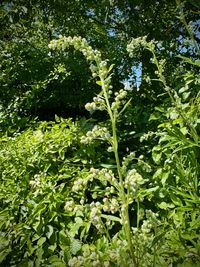Pollen information for Tyrol from 3 August 2025
Low pollen count throughout Tyrol - the next phase of the pollen season begins!
Grass pollen. The main part of the grass pollen season is now over in Tirol. Pollen concentrations are currently predominantly low throughout the region - even at higher altitudes. The recent rainy weather has helped to keep pollen levels low. In some places, especially near meadows, pastures or maize fields, moderate amounts of pollen may still be present. For most allergy sufferers, however, the worst should be over. The concentrations of plantain and dock pollen are also low. These types of pollen can exacerbate allergic symptoms, especially in people who are already sensitive to grass pollen. Low pollen concentrations are expected to continue in the coming weeks - a sign of the transition to a calmer phase of the current pollen season.
Mugwort. A new phase of the pollen season is beginning - and mugwort is the next challenge for allergy sufferers. The first mugwort pollen has been detected in the air over the past few days, which means that the mugwort plants in Tyrol are now starting to bloom. Mugwort pollen is known to trigger strong allergic reactions. At the moment the concentrations are still low, but they are expected to increase in the coming weeks. Anyone who is allergic to mugwort should avoid areas where the plant grows in large numbers - especially along roadsides, field edges and fallow land.
Other types of pollen. Pollen from other plants such as stinging nettle is also in the air, but generally only has a low allergenic potential.
Fungal spores. The concentration of fungal spores is currently in the moderate range throughout the region and can trigger allergic symptoms in sensitive people.
Responsible for the content
Universität Innsbruck
Institut für Botanik
Dr. Laurent Marquer
Mittelfristige Prognose basierend auf Modelldaten und Pollenzählungen.
Auszugweiser oder vollständiger Nachdruck und Veröffentlichung nur unter Angabe der Quelle gestattet.
Wetterdaten und Prognosen basierend auf synoptischen Daten:
GeoSphere Austria, Bundesanstalt für Geologie, Geophysik, Klimatologie und Meteorologie (ehemals ZAMG).
zum Team


